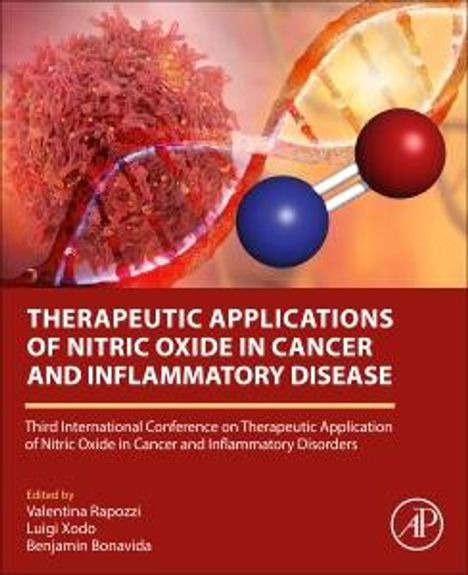Therapeutic Applications of Nitric Oxide in Cancer and Inflammatory Disease, Kartoniert / Broschiert
Therapeutic Applications of Nitric Oxide in Cancer and Inflammatory Disease
- Third International Conference on Therapeutic Application of Nitric Oxide in Cancer and Inflammatory Disorders
(soweit verfügbar beim Lieferanten)
- Herausgeber:
- Valentina Rapozzi, Luigi Xodo, Benjamin Bonavida
- Verlag:
- Elsevier Science, 11/2024
- Einband:
- Kartoniert / Broschiert
- Sprache:
- Englisch
- ISBN-13:
- 9780443223549
- Artikelnummer:
- 11753343
- Umfang:
- 356 Seiten
- Gewicht:
- 717 g
- Maße:
- 234 x 188 mm
- Stärke:
- 23 mm
- Erscheinungstermin:
- 18.11.2024
- Hinweis
-
Achtung: Artikel ist nicht in deutscher Sprache!
Klappentext
Therapeutic Applications of Nitric Oxide in Cancer and Inflammatory Disorders: Third International Conference on Therapeutic Application of Nitric Oxide in Cancer and Inflammatory Disorders presents updated information on the chemistry, signaling of newly derived therapeutic nitric oxide donors / inhibitors, and their complexes in liposomes or nanospheres in both preclinical and clinical investigations.
This book consists of the following: The program and abstracts presented at the Third International Conference in Udine, Italy, September 3-5, 2023; Parts I-V review on (I) the general properties of nitric oxide in diseases; (II) the role of nitric oxide in cancer; (III) nitric oxide and immunity; (IV) nitric oxide and aging; and (V) nitric oxide and therapeutics. In addition, part VI is an educational review on artificial intelligence and its application in diseases. These updated reviews present many examples of research investigations related to the application of novel therapeutic compounds on nitric oxide and new derivatives, as well as their significant therapeutic activities against various resistant cancers that are unresponsive to current treatments and in different inflammatory disorders.
This book is a valuable resource for cancer researchers, oncologists, graduate students, and investigators from medical and biomedical fields who want to learn more about NO and its therapeutic applications in cancer and inflammatory diseases. This book is also highly useful for both clinicians and oncologists as well as pharmaceutical companies involved in the development of new anticancer / antiinflammatory agents.


